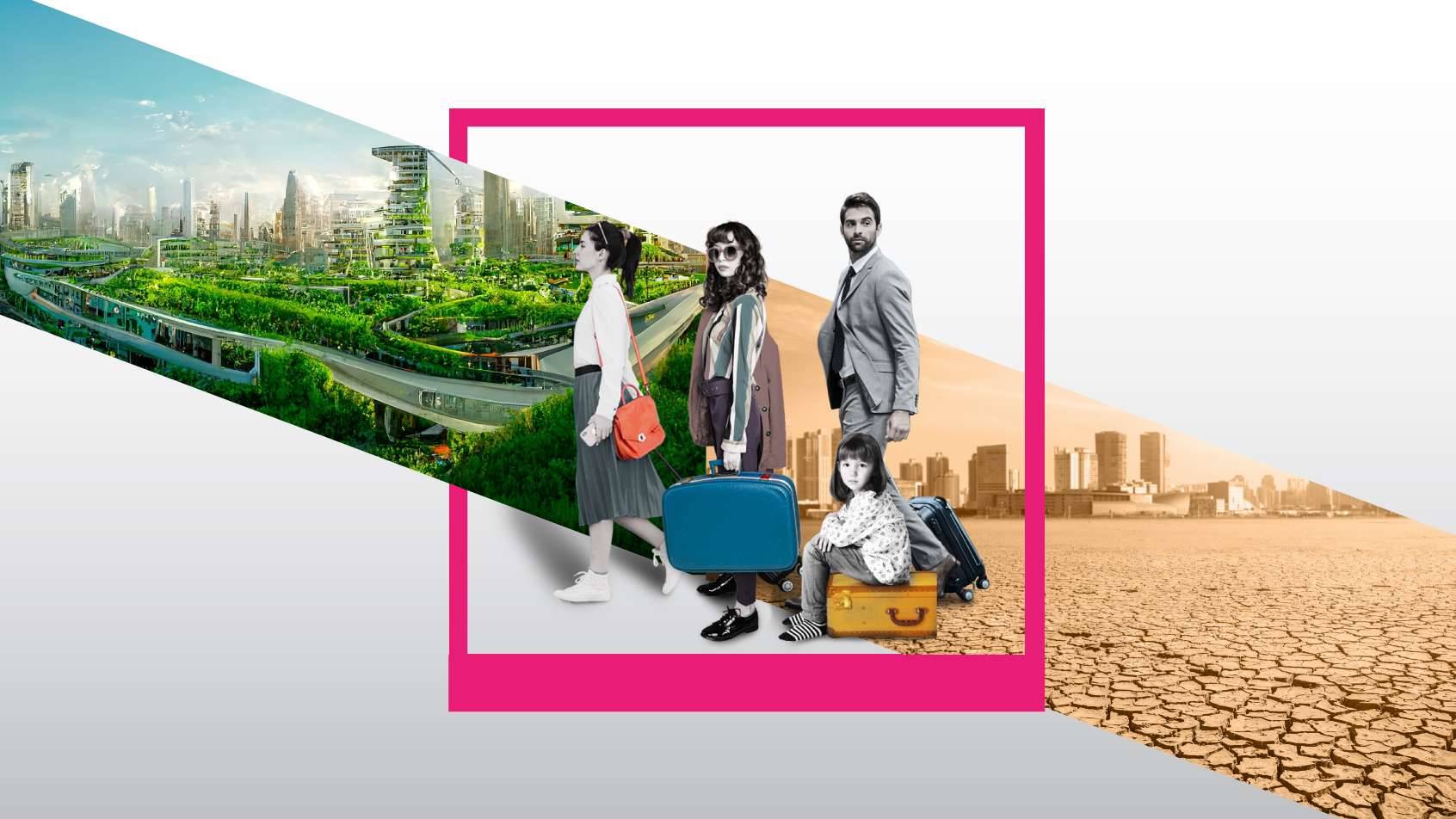
Climate Refugee VISA for Climate-Stressed Migrants
ARTICLES | Jun 20, 2023
Refugees are usually fleeing a severe threat. Legal refugees need visas to show at immigration checkpoints. In the past, they claimed asylum over war, genocide, religious wars, and political conflict. But the changing environment could soon also introduce climate visas to protect refugees.
Climate change could be more severe than natural disasters like typhoons or tsunamis. Relocation could last a lifetime. It is estimated that by 2050 there will be 216 million climate refugees, both sudden and gradual. About 48 island nations may disappear due to sea level rise by 2100. Inland nations, particularly in sub-Saharan Africa, South Asia, and Latin America, facing the threat of climate crisis. Desertification grew to 100 sq. km between 1950 and 2015 and expands each year. Drought, flooding, coastal erosion, agricultural crisis are increasing. Temperature may hit 50°C.
But some areas will remain safe enough to accommodate more people. Some countries may have infrastructure systems to prevent such problems. A country that can welcome more people may therefore attract asylum seekers. But there are complex considerations for destination countries, such as confirming refugee status, assessing the potential for admitting more immigrants, criteria to admit immigrants, and feasibility in terms of demographic, economic, and sociopolitical impacts, including humanitarianism.
In 2020, the New Zealand government proposed accepting 100 refugees a year over environmental pressures, starting with people from island nations in the Asia-Pacific region. However, the idea was terminated due to public resistance. The public felt the government should focus on controlling emissions, local adaptation, and legal immigration pathways. But government cannot ignore the risks to their citizens.
Implications for the future:
- There is a need to discuss and establish an international entity certifying climate refugee status.
- Destination countries need to enforce procedures for managing refugees who will come to stay in the country, including rights to access education, medical services, and in particular, the training to enter the local labor market, such as the classification of highly skilled.
- Relocation to destination countries can cause refugees, especially children and teenagers, to lose their indigenous cultural identities and incur the trauma of being detached from their homeland.
- Policies to curb hazards and the intervention of future and emerging climate crises for risk countries should be vigorously promoted by the public and private sector to prevent extreme events such as the anticipated massive exodus.
Reference:
- https://doi.org/10.1007/s10584-020-02691-9
- https://smart-visa.boi.go.th/home_detail/general_information.php?lang=th
- https://www.amnesty.or.th/our-work/refugees/
- https://reliefweb.int/report/world/new-zealands-climate-refugee-visas-lessons-rest-world
- https://www.climate-refugees.org/why
- https://devpolicy.org/new-zealands-climate-refugee-visas-lessons-for-the-rest-of-the-world-20200131/
- https://www.spf.org/opri-intl/global-data/report/perspectives/20200526071205772.pdf
++ Read more about: Climate Change and Futures of Sustainability: www.futuretaleslab.com and https://www.blockdit.com/futuretaleslab
Want to know more about us, click https://web.facebook.com/FutureTalesLABbyMQDC and https://www.blockdit.com/futuretaleslab











